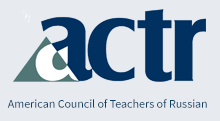Russian Language Journal
Keywords
Russian words, Russian language teaching, vocabulary teaching
Abstract
In the field of teaching English as a second language (ESL), vocabulary studies have grown in prominence since the development of the General Service List (West 1953). This list sought to define the most common and useful words in English to provide a focus for teachers in instruction and for learners in developing their language proficiency. Since then, the development of electronic language corpora and concordance software has greatly expanded the ESL field’s capacity for studying vocabulary frequency and usage (Dang 2020). For example, researchers have tried to determine vocabulary size (i.e., how many of the most frequent words) a learner needs to read and comprehend authentic texts easily (Schmitt and Schmitt 2014). Nation (2013) suggests that knowledge of the 8,000–9,000 most frequent word families would cover about 98 percent of the vocabulary used in English novels and news reports. If a nonnative reader knows 98 percent of the vocabulary in a text, that reader should then be able to use context to figure out the remaining unknown words. Researchers have tried to measure a learner’s vocabulary size with instruments like the Vocabulary Levels Test (VLT), which assesses learners’ receptive knowledge of word meanings starting with items from the first 1,000 most frequent word families (i.e., the first band) down to the fourth 1,000 most frequent words (Kremmel and Schmitt 2018).
Recommended Citation
Comer, W. J. (2021). Russian’s Most Frequent Words and Implications for Vocabulary Instruction. Russian Language Journal, 71(1). https://doi.org/10.70163/0036-0252.1316

